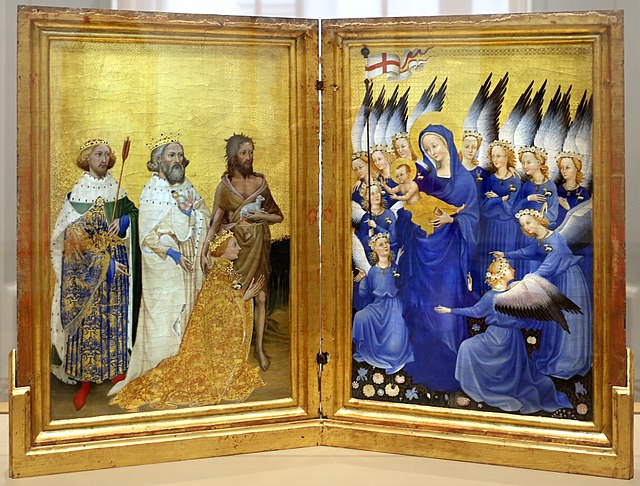Dowry of Mary is a title used in Catholic contexts to refer to England. It dates back to medieval times and had become widespread by the middle of the fourteenth century. It reflects the deep devotion to Mary that existed in medieval England, and the belief that she took a particular protective interest in the country's affairs.
Image: The Wilton Diptych (left)
Image: The Wilton Diptych (Right)
The Wilton Diptych is a small portable diptych of two hinged panels, painted on both sides, now in the National Gallery, London. It is an extremely rare survival of a late medieval religious panel painting from England. The diptych was painted for King Richard II of England, who is depicted kneeling before the Virgin and Child in what is known as a donor portrait. He is presented to them by the English saints King Edmund the Martyr, King Edward the Confessor and patron saint, John the Baptist. The painting is an outstanding example of the International Gothic style, and the nationality of the unknown artist is probably French or English.
The Wilton Diptych, c. 1395–1399. Each panel is 53 cm × 37 cm (21 in × 15 in).
The outer sides of the diptych. Richard's arms (l.) and white hart emblem (r.)
The diptych panels in their golden frame at the National Gallery
The Dunstable Swan Jewel, a livery badge in ronde bosse enamel, about 1400. British Museum






